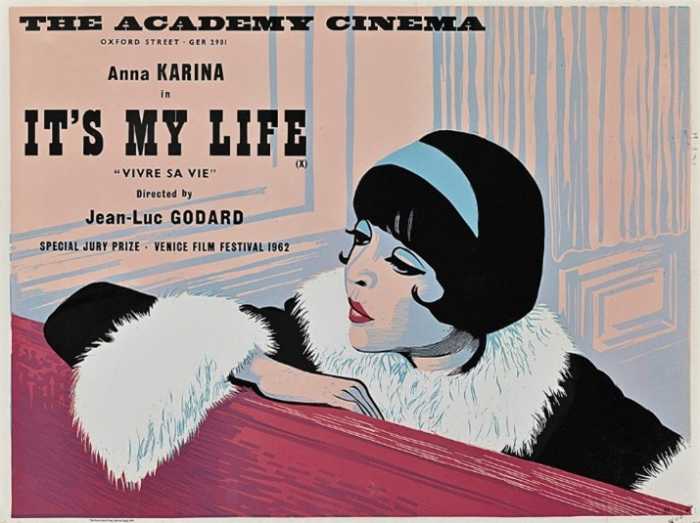After the final public hearing on the proposed Avenir casino in Hell’s Kitchen, the Community Advisory Committee overseeing the project is now tasked with weighing two starkly different visions of the neighborhood’s future — one cast as a community in dire need of a “shot in the arm,” the other as a family-friendly enclave already choked with congestion that a casino would ruin.
The second hearing, held Monday night, marked a departure from the first, which took place on the afternoon of Aug. 28 and drew a mostly positive reception.
The later start time brought more local residents, many with sharper critiques and stronger opinions about the $ 7 billion development planned for West 41st Street and 11th Avenue that is one of eight bids competing for three downstate casino licenses that state regulators expect to award by the end of the year.
Just over 170 people spoke during the nearly five-hour hearing, and locals were just about split on having the casino in their neighborhood. About 75% of the testimony was favorable towards the development, with a large majority of it coming from people living outside of the impact zip codes — a mix of unions, artists, and people with ties to Silverstein Properties and Rush Street Gaming.
Longtime locals were the first to speak up, and many made clear they had been burned before on promises of affordable housing. They said they want those units in their neighborhood, but without what they described as the “strings attached” of a casino. Others begged the CAC not to weigh the testimony of those not living near the development.
“Any non-resident testimony today is irrelevant. They have no skin in the game other than a hoped-for profit at the locals’ expense,” said Jake, a longtime Hell’s Kitchen resident.
Shell games: Congestion, broken promises, propaganda
If selected, the Avenir would include a 1,000-room Hyatt hotel, a dozen restaurants, a food hall, and a casino occupying about 12% of the project footprint. As part of the proposal, Silverstein has pledged to build 2,000 new apartments, including 500 permanently affordable units within the area covered by Community Board 4.
Traffic dominated the concerns of opponents. With the Lincoln Tunnel pouring thousands of cars into the neighborhood each day and the Port Authority’s decades-long bus terminal renovation underway, several residents said emergency vehicles already struggle to get through.
Susan Jax, a resident of River Place, said she is “terrified” to have the development half a block from her home: “I am five feet tall, I am not getting any younger. I am invisible to the trucks and SUVs and everything else that will be making right turns and left turns and going through the tunnel,” she said. “My husband has Parkinson’s. He is increasingly disabled. It is a hazard for us to get across the street.”
To limit car use, the Avenir proposal includes restricted on-site parking, a dedicated loading dock, and a free 24-hour shuttle system to Penn Station, Grand Central Terminal, and Hudson Yards. Developers estimate the shuttles could handle about 8,000 riders daily.
Silverstein has also indicated that the Avenir project could revive a long-stalled 10th Avenue subway stop at 41st Street, saying the development would generate $3 billion in direct MTA revenue in its first decade and an additional $4 billion in tax revenue for the city.
Jax dismissed the suggestion of a new subway station, saying, “When will that happen?”
“The Avenir is not the only one to make that decision. It’s going to happen in maybe 30 years, and I’ll be dead. Hopefully not hit by a car,” she concluded.
At the last public hearing two weeks ago, environmental consultant Connor Lacefield of AKRF reported that a draft impact statement showed no major adverse effects in 19 out of 22 categories reviewed. He noted, however, that vehicle trips associated with the project would raise local traffic volumes by roughly 2%, dispersed throughout the day rather than concentrated at peak hours.
He also mentioned that traffic analyses identified slight delays at the intersections of 10th Avenue and 42nd Street and 11th Avenue and 42nd Street. According to the consultants, those issues could be addressed through adjustments to traffic signal timing.
However, on Monday night, James, an urban planner and 20-year resident of Manhattan Community Board 4, criticized Silverstein’s environmental impact statement, saying it relied on faulty traffic modeling that underestimates casino congestion.
“The impact study relies on ad hoc trips and curb assumptions that understate late-night peaks, ride-hail, and tour buses. The study should be redone using a state or federal methodology that includes casinos, so we can understand the full impact of this project,” he said.
“In addition, the study area is too narrow; it only looks at a 400-foot circle around the area, which largely the entrance to the [Lincoln] tunnel, and doesn’t at all consider the vibrant small businesses and neighborhoods that are stones thrown in any direction from the site.”

Residents of Manhattan Plaza were among the most well-represented at the hearing, seeking to highlight the impact such a development will have on daily life.
Melinda Tanner, a resident of the affordable housing complex with a significant older population for 48 years, warned that ambulances already struggle to reach patients near the Lincoln Tunnel.
“Every weekday, I watch from my window at a gridlock of cars totally surrounding the proposed Avenir site like a tight belt,” she said. “Cars creeping along from three different directions, trying to get into the tunnel. I see and have heard ambulances and police cars sometimes having to use the green bike lane because things are moving so slowly, if at all, to get to someone in need.”
“This is a residential neighborhood. And in the case of Manhattan Plaza, it is also thriving, informed, and a voting retirement community. This is a horrible idea for today’s Hell’s Kitchen. We need people who actually live here, not a grab-and-go operation,” she said.
“If this casino goes up, there will be blood on your hands when emergency vehicles cannot get through,” said Luigi Scorcia a 911 first responder who grew up in the neighborhood.
Sally Taylor, who grew up in Manhattan Plaza and now lives near the site said, “I do not feel unsafe here. I do not consider the area to be derelict, as others have said.”
“I am trying to raise a family here and a casino and hotel is the opposite of what we need. We need schools, green spaces, supermarkets, and more affordable housing. We need places where my three-year-old can live, play, and thrive. Not an art gallery where we can hang out,” she said. “Not a food court with a with local restaurants when these restaurants are already here. Not just a hundred affordable units in indeterminate locations offsite, and certainly not a casino environment that displays gambling and addiction to my child. Not to mention the traffic, the criminal element that is often connected to casinos.”
Ally, who lives at 42nd St and 11th Ave, warned that a proposed casino would undermine the neighborhood’s character and safety, saying it would push families out of the neighborhood she chose to raise a family.
She also accused project backers of running a “propaganda machine,” claiming many residents were left in the dark and that AI-generated emails were being used to manufacture support: “No one in my building knew until I started going door-to-door literally asking people if they’d heard, and they said that they had not.”
The Avenir’s website asks supporters of the project to “make their voices heard” by using an email generator that goes straight to the inbox of the CAC and the elected officials who appointed the board members. Users are unable to see the final email that they consent to send, but can add “personal context” that is then modified using AI.
Ally’s sister and fellow resident, Lexi, later spoke to the CAC, warning them that residents were being “framed as old and backward against the shine of promised progress” and that this narrative was being pushed through “propaganda,” including the form on the Avenue website that allows people to use AI to generate and send emails quickly.
She argued that pledges to support housing and the arts were a “shell game.” She urged officials to “have them invest in the subway” and affordable housing first, warning that casinos “feed off of the community” rather than attract tourists. Instead, she called for projects “like the High Line that actually bring art to the community and aren’t insulated by a gambling institution.”
“People gamble on their phones,” she said. “Why do you want to put gambling in our neighborhood?”

Safety, revitalization, management track record
While the opposing side highlighted the tactics of emails, one local in support of the project, Jon Nelsen, questioned why Manhattan Plaza residents, in particular, were so strongly opposed and suggested they were being “incentivized,” noting that many raised concerns about ambulance response times.
Holding up a flyer from the Caesars Palace Times Square casino bid, promising a 75% improvement in response times through donations to an ambulance program, he suggested the residents were trying to sabotage the Avenir bid – a claim that drew disgust from those residents.
Jon argued that “it’s almost like they were told what to say,” while stressing that the Avenue project would have its own EMS and police presence on-site.
He said his safety concerns stem more from “open drug users and homeless encampments” at the vacant property than from traffic, which he called “a personal choice we’ve all made.” He added that the development would bring an NYPD outpost and improved security, and rejected claims that casinos keep visitors inside, saying people come to New York for “the sights, Broadway, and the energy of the city.”
amNewYork later learned that Nelsen and his partner Ebony Mackey had been paid to promote Silverstein Properties and its Avenir bid on the their social media channels. Nelsen’s daughter, who also testified, told friends they would receive $300 to speak in favor of the proposal at the hearing. The Avenir denied that anyone was paid to testify at Monday’s hearing.

Other residents told the committee that the project offered a rare chance to improve the area. Several spoke from experience as tenants in Silverstein’s nearby buildings, River Place and Silver Towers, praising the company for making the neighborhood safer and more livable.
One River Place resident described the area before construction as “unsafe” and “empty.” “Without that, we probably wouldn’t be here today,” he said.
Another, a longtime tenant, said Silverstein had “kept every promise” as a landlord.
“Somebody’s going to build on that site, and it’s not going to be perfect,” he told the committee. “But I believe Silverstein is the best company to do it, because it has an amazing track record of honesty and integrity.”
Others pointed to the desolate feel of 11th Avenue after dark. “The streets are empty at night,” one said. “This project is perfect for this neighborhood, and this neighborhood is perfect for this project.”
Beyond residents, the hearings drew testimony from artists, real estate professionals, and nonprofit leaders who said Silverstein’s plan stood apart from competing casino bids.
Photographer Joe Woolhead credited Silverstein’s role in rebuilding the World Trade Center. “I saw the ripple effects a mini economic boom can have on communities,” he said. “This project will totally change Midtown West.”
Artist Russell Craig described how Silverstein Properties provided him with affordable studio space that helped him showcase his work at the Armory Show. “That would have never happened without Silverstein,” he testified.
Eric Zonlinger, a real estate professional, admitted he had once been skeptical of casinos but said the inclusion of affordable housing, cultural space, and connections to the Javits Center persuaded him. “It will activate an underutilized block and generate critical tax revenue,” he said.
Nonprofit leaders also weighed in. The CEO of Rethink Food, which distributes meals across the city, said Silverstein had supported his work for years. “Realistically, we all know there is going to be a casino,” he told the hearing. “The most responsible party is The Avenir.”
Organized labor mounted a strong showing, with members of SEIU Local 32BJ and construction unions speaking in support of the project which promises to create 4,000 union construction jobs and 5,000 permanent jobs, with a median wage of $50 an hour.
“This project will significantly benefit our city’s economy by generating local businesses and fostering community growth,” one labor leader said.
Workers from Rivers Casino in Schenectady testified about the stability union jobs had given them and urged Hell’s Kitchen residents to see similar benefits. “These are good jobs with health care and pensions,” one worker said.
With the public hearings now over, the CAC is still accepting written testimony from the public before making its final decision by Sept. 30. If it secures a two-thirds majority vote from the CAC, it will move forward to the Gaming Facility Location Board, which will make a final decision on the applications by Dec.1.







































